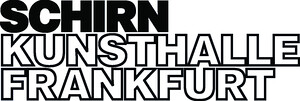July 6–October 3, 2016
Römerberg
60311 Frankfurt am Main
Germany
T +49 69 2998820
welcome@schirn.de
www.schirn-mag.com
www.schirn.de/digitorial/
Facebook / Twitter / YouTube / Instagram / Pinterest / #ArtForAll / #Schirn
The exhibition Art for All. The Color Woodcut in Vienna around 1900 is a first. The woodcut is one of the oldest printing techniques known and reached its zenith during the Middle Ages with Albrecht Dürer. Over the centuries the technique was increasingly forgotten, only to be rediscovered quite suddenly throughout Europe in a trend-setting development at the beginning of the 20th century. This was also the case in Vienna, where numerous artists, including a remarkable number of women, breathed new life into the color woodcut. From July 6 to October 3, 2016 the Schirn Kunsthalle Frankfurt is dedicating a major, long overdue exhibition to this previously largely neglected phenomenon. Some 240 works by over 40 artists—also employing related techniques such as linocut and block printing—give an impressive overview of the subject and demonstrate for the first time the full extent of the aesthetic and social achievements of the color woodcut in Vienna around the turn of the last century.
Dr. Tobias G. Natter, the curator of the exhibition and an expert on Viennese art around 1900, explains: “Although in recent decades Viennese Modernism has been more intensively researched than any other period of Austrian art and cultural history, its contribution to the art of the color woodcut has rarely been discussed. The rediscovery of the woodcut and associated techniques was an experiment with far-reaching effects during modernism, not least for successive generations of artists. What is so fascinating about the color woodcut in Vienna is the stylistic and thematic variety as well as the mood of change, which can still be sensed today. It was driven by a wide variety of sources and successfully introduced on behalf of one central topic: the creation of two-dimensional art of lasting value.”
The presentation examines the remarkable enthusiasm with which not only established painters, but also newcomers devoted their attention to the color woodcut during a short but all the more intensive golden age between 1900 and 1910 in Vienna. Among them members of the Vienna Secession whose names are still familiar today, such as Carl Moll and Emil Orlik, as well as artists who have been almost forgotten like Gustav Marisch, Jutta Sika, Viktor Schufinsky and Marie Uchatius. The latter were all students of the Wiener Kunstgewerbeschule (College of Applied Arts), which was particularly popular among talented young artists. They were fascinated by the technical and formal possibilities of the traditional printing technique, which offered the artistic imagination tremendous freedom. It considerably influenced the emergence of a modern pictorial language at the beginning of the 20th century with its characteristic outline drawings and its stylized planar representational style.
Moreover, thanks to its affordable prices even for original prints, the color woodcut opened up the previously elitist art market to a broad public. Within the social reformist movement “Kunst für Alle” (Art for All) it encouraged a lively discussion about authenticity and originality on the one hand as well as encouraging artistic creativity beyond the so-called “ivory tower” on the other—topics which have lost nothing of their relevance to this day.
The exhibition is accompanied by a comprehensive catalog in English, German and French language, which has been published by Taschen Verlag. Edited by Tobias G. Natter, Max Hollein and Klaus Albrecht Schröder. It compromises essays by Tobias G. Natter, Johannes Wieninger, Alexandra Matzner and short texts by Katharina Knacker and Saskia Wagner.
An elaborately designed “digitorial”—available at www.schirn.de/digitorial/—provides comprehensive insights into the art and cultural historical background and the core topics of the exhibition.
Curator: Dr. Tobias G. Natter
Press contact: Pamela Rohde (Head of Press/Public Relations): presse [at] schirn.de / T (+49 69) 29 98 82 148
Press material: www.schirn.de/en/ (texts, images, and films for download under PRESS)



